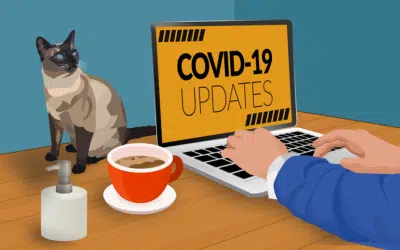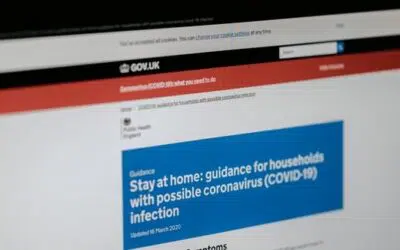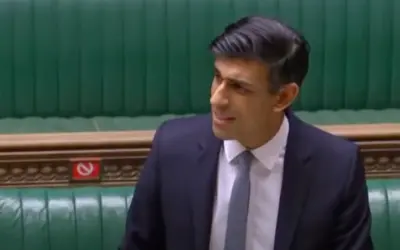Update on the Coronavirus Job Retention Scheme (CJRS or Furlough)
On Friday 29 May, the Chancellor provided a further update on the furlough scheme. We already knew the scheme would be tapered between August to October and be closed completely from 31 October 2020. We also knew there were plans to launch a flexible furlough scheme from 1 August. In addition, this will allow you to bring employees back part time whilst still being able to use the scheme.
This date was brought forward to 1 July 2020 to help support people back to work. In addition, you as the employer will decide the hours and shift patterns your employees will work on their return. Furthermore, this is so you can decide on the best approach for them. In addition, you will also will be responsible for paying their wages while in work.
From August 2020, the level of government grant provided through the job retention scheme will also be slowly tapered to reflect that people will be returning to work. In addition, for June and July, the government will also continue to pay 80% of people’s salaries. In the following months, businesses will be asked to contribute a modest share, but crucially individuals will continue to receive that 80% of salary covering the time they are unable to work.
The scheme updates mean that the following will apply for the period people are furloughed:
- June and July: The government will pay 80% of wages up to a cap of £2,500 as well as employer National Insurance (ER NICS) and pension contributions. Furthermore, employers are not required to pay anything.
- August: The government will pay 80% of wages up to a cap of £2,500. Employers will pay ER NICs and also pension contributions. For the average claim, this represents 5% of the gross employment costs the employer would have incurred had the employee not been furloughed.
- September: The government will pay 70% of wages up to a cap of £2,187.50. Employers will pay ER NICs and pension contributions. They will also pay 10% of wages to make up 80% total up to a cap of £2,500. For the average claim, this represents 14% of the gross employment costs the employer would have incurred had the employee not been furloughed.
- October: The government will pay 60% of wages up to a cap of £1,875. Employers will pay ER NICs, pension contributions and also 20% of wages to make up 80% total up to a cap of £2,500. For the average claim, this represents 23% of the gross employment costs the employer would have incurred had the employee not been furloughed.
Flexible Furlough
From 1 July, employers can bring back to work employees that have previously been furloughed for any amount of time. In addition, this includes any shift pattern, while still being able to claim CJRS grant for their normal hours not worked. When claiming the CJRS grant for furloughed hours, employers will need to report and also claim for a minimum period of a week.
The scheme will close to new entrants from 30 June. From this point onwards, employers will only be able to furlough employees that they have furloughed for a full 3-week period prior to 30 June.
This means that the final date by which an employer can furlough an employee for the first time will be 10 June. In addition, this in order for the current 3- week furlough period to be completed by 30 June. Furthermore, employers will have until 31 July to make any claims in respect of the period to 30 June.
Guidance on flexible furloughing and how employers should calculate claims will be published on 12 June. Find out more information on how the Coronavirus Job Retention Scheme is changing.
The HMRC Guidance states – From 1 July the scheme will only be available to employers that have previously used the scheme in respect of employees they have previously furloughed.
In addition, this means employees who are now back at work but were previously on the furlough schemes can be re-furloughed again. Furthermore, The 10 June date applies to new entrants only.
Next Steps
If you haven’t furloughed employees you think you may need to in the future, you must do this by 10 June.
Furthermore, if you are looking to recall employees back from furlough flexibly, please speak to them. In addition, talk to them about how these new arrangements could work. For instance, is it 2 days per week or 5 shorter days? You could also have employees with childcare issues over the upcoming holidays – does flexible furlough allow you to retain talent and skills whilst meeting business needs?
Remember, our Covid-19 Toolkit is also available for you and please speak to us should you have any questions or concerns – contact us on our Contact form below or 01383 668178.
Late on Friday night, the details of how the new Flexible Furlough Scheme which starts on 1 July were released by HMRC. This is now the 14th update to furlough scheme following its launch in March. You can find the current version here.
The main changes are:
- Furloughed employees can work for you from 1 July, under the flexible furlough scheme. In addition, working you in any scenario whilst furloughed was previously prohibited. They must be paid for all hours worked directly by you in the usual way. They MUST not work for you during their remaining unworked and furloughed hours.
- The 3-week minimum furlough period will no longer apply after 1 July; you can agree what hours employees will work and on what shift pattern, on a week by week basis. This is extremely helpful for you in terms of workforce planning.
- You must keep a record of the new agreement of varied hours and a record of all hours worked and furloughed. We would recommend keeping these documents for up to 6 years. This can be stored in your HR files or our Breathe HR software. The guidance states that agreements should be not only in line with employment law but also equality and discrimination legislation; there is therefore a clear requirement for employers to think about how the flexible furloughed arrangements might impact working parents, pregnant women and people with disabilities.
- It confirmed the previous points on holiday (this wasn’t in this guidance before); as a reminder, you need to pay in full if employees take holiday during furlough and that you can ask them to take leave provided you give them the prescribed notice. The notice is double the amount of the holiday – for example, if you want employees to take 5 days annual leave you must give them 10 days’ notice.
- If employees are returning from parental leave, the deadline of 10 June to enter the scheme does not apply and they can still be furloughed when that leave ends
Updates had also been made to the guidance on how to claim for your employees’ wages online:
This sets out what additional information you need when making a claim online under the Flexible Furlough Scheme. Furthermore, this include:
- The number of usual hours would work in the claim period;
- Number of hours your employee will work in the claim period;
- The number of furloughed hours your employee has been furloughed in the claim period.
It also addresses what to do if you make an error when making claims. It specifically states that you must repay any overpayments back to HMRC.
New Guidance
Steps to take before calculating your claim using the CJRS:
- You need to decide the length of your claim period but its suggested that you match this with payroll dates;
- Work out what to include when calculating wages (the rules haven’t changed on this);
- Work out your employees’ usual and furloughed hours. You need to assess if they are on fixed or variable hours and you need to know their exact hours before claiming; there are some workable examples in the guidance which are really helpful;
- Remember, the scheme rules will change each month so you have to claim for each month separately – claim periods cannot overlap;
- Employees coming back from sick leave or family related leave should be calculated on their normal pay before that leave, not their pay whilst they were on leave.
NOTE – if your employees are remaining on full furlough and you don’t intend to bring them back to work, you just need to work out the maximum amount which you are claiming for.
Calculate how much you should claim:
- Recording requirements – keep all records for 6 years;
- Once you know the usual hours you can use the calculator (your Payroll team/provider should be able to help with this);
- Shows you how to work out the maximum wage amount and how to calculate NICs, pensions and hours in a bit more detail with worked examples.
Part-furlough worked example – sets out some worked examples for you to give some context on how to calculate flexible furlough claims.
We would recommend speaking to your payroll provider or your accountant for further support on how to calculate furlough, if you are unsure.
Reminder on payments including NI and Pensions
Remember, from 1 August, you will need to start paying the employer’s national insurance and pension contributions.
From 1 September:
- Employers will continue paying the employer’s national insurance and pension contributions
- The government will pay 70% of wages
- Employers will need to top up to 80% or more, depending on what’s been agreed with the employee
From 1 October:
- Employers will continue paying the employer’s national insurance and pension contributions
- The government’s contribution to wages will go down to 60%
- Employers will need to top up to 80% or more, depending on what’s been agreed with the employee
The furlough scheme will close on 31 October 2020.







